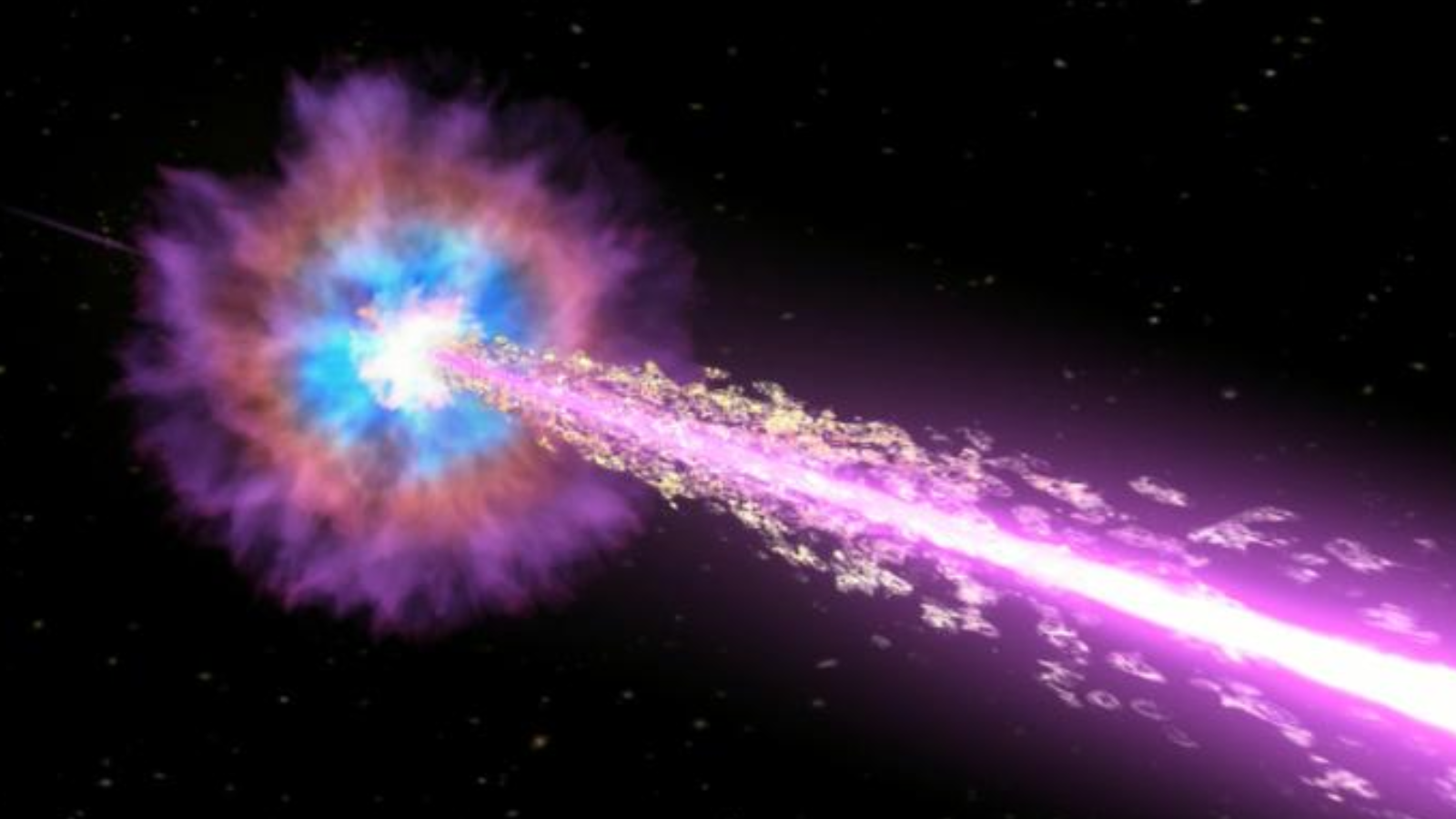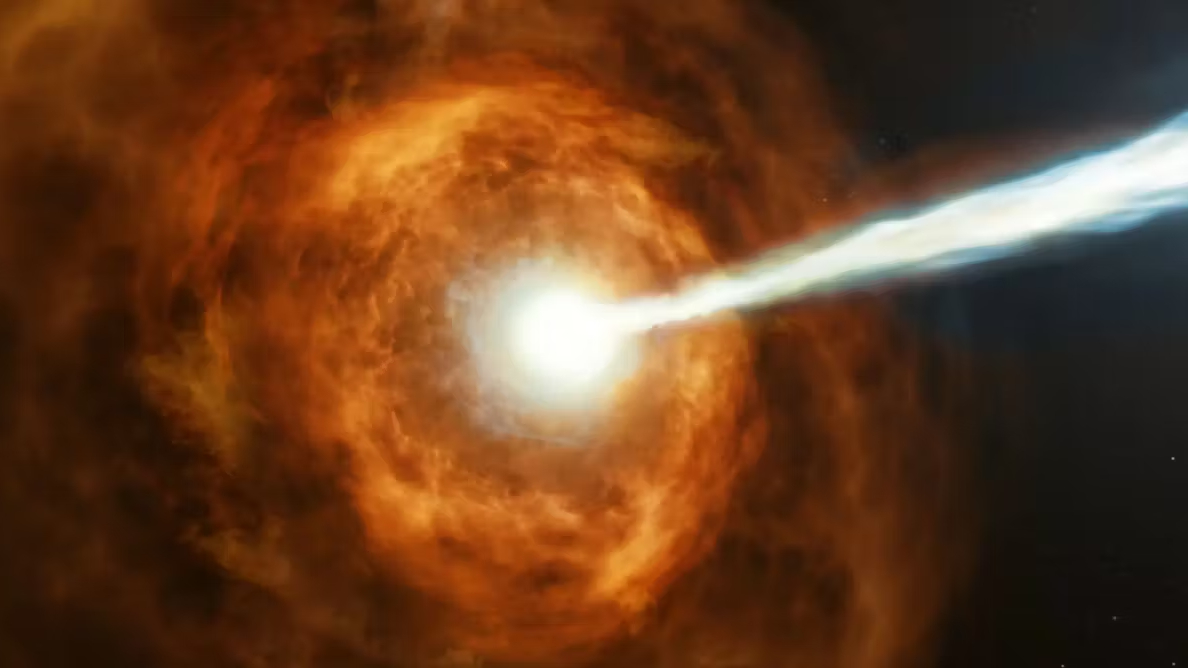
Astronomers have cataloged a stunning treasure trove of over 500 of the universe's most powerful explosions.
These so-called gamma-ray bursts, or GRBs, are so energetic that if just one of them were to occur within 1,000 light-years of Earth, it could destroy our atmosphere with catastrophic results for life on our planet. Fortunately, however, the closest GRB in this new clutch of 535 observations is 77 million light-years away from Earth.
The new catalog was created by a global army of 50 astronomers led by Maria Giovanna Dainotti of the National Astronomical Observatory of Japan using data from 455 telescopes across the Earth. In terms of importance, the catalog could rival the Messier catalog of 110 deep sky objects created by French astronomer Charles Messier 250 years ago — a catalog still used by astronomers of all skill levels today.
"Our research enhances our understanding of these enigmatic cosmic explosions and showcases the collaborative effort across nations," Dainotti said in a statement. "The result is a catalog akin to the one created by Messier 250 years ago, which classified deep-sky objects observable at that time."
Related: The elusive origins of long gamma-ray bursts may finally be revealed
Team member Alan Watson of the National Autonomous University of Mexico also emphasized the importance of the GRB catalog, hailing it as a "great resource" that could help "push the frontiers of our knowledge forward."
The power of gamma-ray bursts
Lasting from a few milliseconds to several minutes, GRBs can be hundreds of times brighter than an average supernova, putting out more energy in mere seconds than the sun is capable of radiating over its lifetime of around 10 billion years. Thus, when a GRB erupts, it briefly becomes the brightest source of electromagnetic radiation in the observable universe.
The first observation of a GRB came in the 1960s, but it wasn't until the 1970s when scientists were able to determine that these blasts of radiation were of cosmic origin. Since then, scientists have used GRBs to study matter and physics that couldn't be replicated in labs here on Earth.
GRBs are divided into two main categories: long duration, lasting over two minutes and up to several hours, and short duration, lasting milliseconds to a couple of minutes. Currently, astronomers think short-duration GRBs are caused when either two neutron stars or a neutron star and a black hole collide and merge.
Long-duration GRBs are believed to be launched when massive stars collapse to birth a black hole, causing jets of particles to race away from this scene of devastation at around 99.9% the speed of light.

Using 64,813 observations collected over 26 years, with notable contributions from the Swift satellites, the RATIR camera and the Subaru Telescope, this team built the largest catalog of GRBs to date — replete with 534 entries.
This allowed them to monitor how light from GRBs reaches Earth, which resulted in some surprises. In particular, the researchers found that over a quarter of GRBs, about 28% of the lot, did not generally change as their light raced through the universe. GRBs that erupted billions of years ago in the early universe appearing similar to those that rage today.
This is an odd discovery in a universe with objects and events that have been changing over its 13.8 billion-year history.
"This phenomenon could indicate a very peculiar mechanism for how these explosions occur, suggesting that the stars linked to GRBs are more primitive than those born more recently," Dainotti explained. "However, this hypothesis still needs more investigation."
Some of the GRBs did evolve in optical light, however, in a way that also lined up with their development in X-ray radiation. These subjects were lightly easier to explain.
"Specifically, we are observing an expanding plasma composed of electrons and positrons that cools over time, and like a hot iron rod radiating redder and redder light as it cools, we do see a transition of the emission mechanism," team member Bruce Gendre of the University of the Virgin Islands said in the statement. "In this case, this mechanism may be linked to the magnetic energy that powers these phenomena."
The researchers' next step will be to turn to the wider astronomical community and build on this impressive GRB catalog. To that end, they have made the data available via an app called the Gamma Ray Bursts Optical Afterglow Repository.
"Adopting a standardized format and units, potentially linked to the International Virtual Observatory Alliance protocols, will enhance the consistency and accessibility of the data in this field," Gendre said."Once the data are secured, additional population studies will be conducted, triggering new discoveries based on the statistical analysis of the current work."
The team's research was published on Thurs (Sept. 12) in the Monthly Notices of the Royal Astronomical Society.







